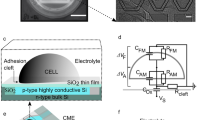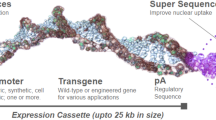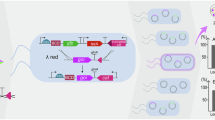Abstract
In vivo electroporation has emerged as a leading technology for developing nonviral gene therapies, and the various technical parameters governing electroporation efficiency have been optimized by both theoretical and experimental analysis. However, most electroporation parameters focused on the electric conditions and the preferred vehicle for plasmid DNA injections has been normal saline. We hypothesized that salts in vehicle for plasmid DNA must affect the efficiency of DNA transfer because cations would alter ionic atmosphere, ionic strength, and conductivity of their medium. Here, we show that half saline (71 mM) is an optimal vehicle for in vivo electroporation of naked DNA in skeletal muscle. With various salt concentrations, two reporter genes, luciferase and β-galactosidase were injected intramuscularly under our optimal electric condition (125 V/cm, 4 pulses x 2 times, 50 ms, 1 Hz). Exact salt concentrations of DNA vehicle were measured by the inductively coupled plasma-atomic emission spectrometer (ICP-AES) and the conductivity change in the tissue induced by the salt in the medium was measured by Low-Frequency (LF) Impedance Analyzer. Luciferase expression in-creased as cation concentration of vehicle dec-reased and this result can be visualized by X-Gal staining. However, at lower salt concentration, transfection efficiency was diminished because the hypoosmotic stress and electrical injury by low conductivity induced myofiber damage. At optimal salt concentration (71 mM), we observed a 3-fold average increase in luciferase expression in comparison with the normal saline condition (p < 0.01). These results provide a valuable experimental parameter for in vivo gene therapy mediated by electroporation.
Similar content being viewed by others
Article PDF
Author information
Authors and Affiliations
Rights and permissions
This is an Open Access article distributed under the terms of the Creative Commons Attribution Non-Commercial License (http://creativecommons.org/licenses/by-nc/3.0/) which permits unrestricted non-commercial use, distribution, and reproduction in any medium, provided the original work is properly cited.
About this article
Cite this article
Lee, MJ., Cho, SS., Jang, HS. et al. Optimal salt concentration of vehicle for plasmid DNA enhances gene transfer mediated by electroporation. Exp Mol Med 34, 265–272 (2002). https://doi.org/10.1038/emm.2002.37
Published:
Issue date:
DOI: https://doi.org/10.1038/emm.2002.37
Keywords
This article is cited by
-
The impact of impaired DNA mobility on gene electrotransfer efficiency: analysis in 3D model
BioMedical Engineering OnLine (2021)
-
Synthesis and Characterization of Dual-Sensitive PAMAM Derivatives Conjugated with Enzyme Cleavable Peptides as Gene Carriers
Macromolecular Research (2021)
-
Increased levels of peroxisome proliferator-activated receptor gamma, coactivator 1 alpha (PGC-1α) improve lipid utilisation, insulin signalling and glucose transport in skeletal muscle of lean and insulin-resistant obese Zucker rats
Diabetologia (2010)



